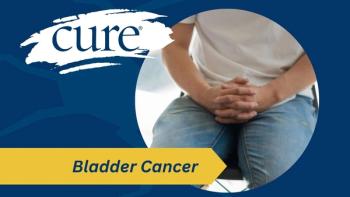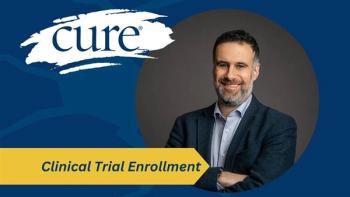
Phase 1/2 Trial Investigating ATR-04 for EGFRi-Related Rashes in Lung Cancer
Key Takeaways
- ATR04-484 is a live biotherapeutic product targeting EGFR inhibitor-associated rashes in cancer patients, containing a modified Staphylococcus epidermidis strain.
- EGFR inhibitors, used in treating several cancers, often cause dermatologic toxicities, leading to treatment discontinuation and patient discomfort.
ATR-04 therapy is being investigated in the phase 1/2 ATR04-484 clinical trial for the treatment of EGFR inhibitor-associated rashes in lung cancer.
The phase 1/2 ATR04-484 clinical trial is examining ATR-04 therapy for the treatment of EGFR inhibitor-associated rashes in patients with non-small cell lung cancer, colorectal cancer and others, according to a news release from Azitra, Inc., a clinical stage biopharmaceutical company.
The news release went on to note that data derived from the investigation will be shared at the 2025 American Society of Clinical Oncology Annual Meeting (ASCO) being held May 30 to June 3, 2025, in Chicago, Illinois.
“We believe topical ATR04-484 has the potential to be an important advance in the treatment of EGFR inhibitor-associated skin rash, which is a painful and debilitating condition that often leads patients to suspend use of these life-saving cancer therapies,” Dr. Mary Spellman, chief medical officer of Azitra, said in the news release.
“As we prepare to dose the first patient in the phase 1/2 clinical trial of ATR04-484, we are excited to present an overview of the study at [the] 2025 ASCO Annual Meeting, which is the preeminent global oncology meeting. The product represents a unique and novel method for treating EGFR inhibitor-associated skin toxicities, and we look forward to presenting this technology to leaders in the cancer research community.”
The presentation is entitled "Epidermal growth factor receptor (EGFR) inhibitor-induced dermal toxicity treated with topical application of a novel Staphylococcus epidermidis compound," and will feature the multicenter, randomized, double-blind, vehicle-controlled phase 1/2 study. The safety and tolerability of ATR04-484 will be examined throughout the clinical investigation for the treatment of EGFR inhibitor-induced dermal toxicity in adult patients.
ATR04-484, the agent being studies, is a live biotherapeutic product candidate that contains a naturally derived Staphylococcus epidermidis strain. To enhance safety, an antibiotic resistance gene was deleted, and auxotrophy was engineered to regulate its growth.
Moreover, Azitra has received Fast Track designation from the FDA for ATR04-484 in the treatment of rash associated with EGFR inhibitors.
Dr. Mary Spellman, chief medical officer, will present the information in a poster at the 2025 ASCO Meeting, taking place at McCormick Place in Chicago. Her presentation will be part of the Symptom Science and Palliative Care track. The poster, designated as number 162b, will highlight relevant findings from the investigation.
What are EGFR Inhibitors, and who can be Treated With Them?
Epidermal growth factor receptor (EGFR) inhibitor therapies, like small-molecule kinase inhibitors and monoclonal antibodies, are standard therapeutic approaches for several cancers, such as non-small cell lung cancer, colorectal cancer, pancreatic cancer, breast cancer and squamous cell carcinoma of the head and neck, according to the National Library of Medicine. Despite significantly prolonged progression-free survival with these therapies, due to intrinsic and/or acquired resistance, curative effects are not often achieved.
The news release goes on to say that EGFR inhibitor therapies work by blocking the activity of the EGFR protein, which is important because this protein plays a vital role in cell growth and survival. However, these treatments are also associated with specific side effects, such as dermatologic toxicities, which can affect treatment efforts and cause physical and psychological discomfort for patients. Due to these side effects, some patients may reduce or even stop these effective treatments.
More Information on EGFR Inhibitor-Induced Skin Toxicities
EGFR inhibitors — including drugs like Erbitux (cetuximab), Vectibix (panitumumab), Tarceva (erlotinib) and Iressa (gefitinib) — are effective cancer therapies but are commonly associated with inflammatory skin rashes, the most frequent side effects associated with the use of EGFR-inhibitors. These acneiform or rosacea-like eruptions typically appear within days to weeks of treatment, affecting over 90% of patients.
The rash often begins within areas of skin that bear high densities of seborrheic glands, though it can spread or develop into perifollicular xanthomas. Notably, recent studies have noted that rash appearance and severity has been linked to improved tumor response.
For more news on cancer updates, research and education, don’t forget to





